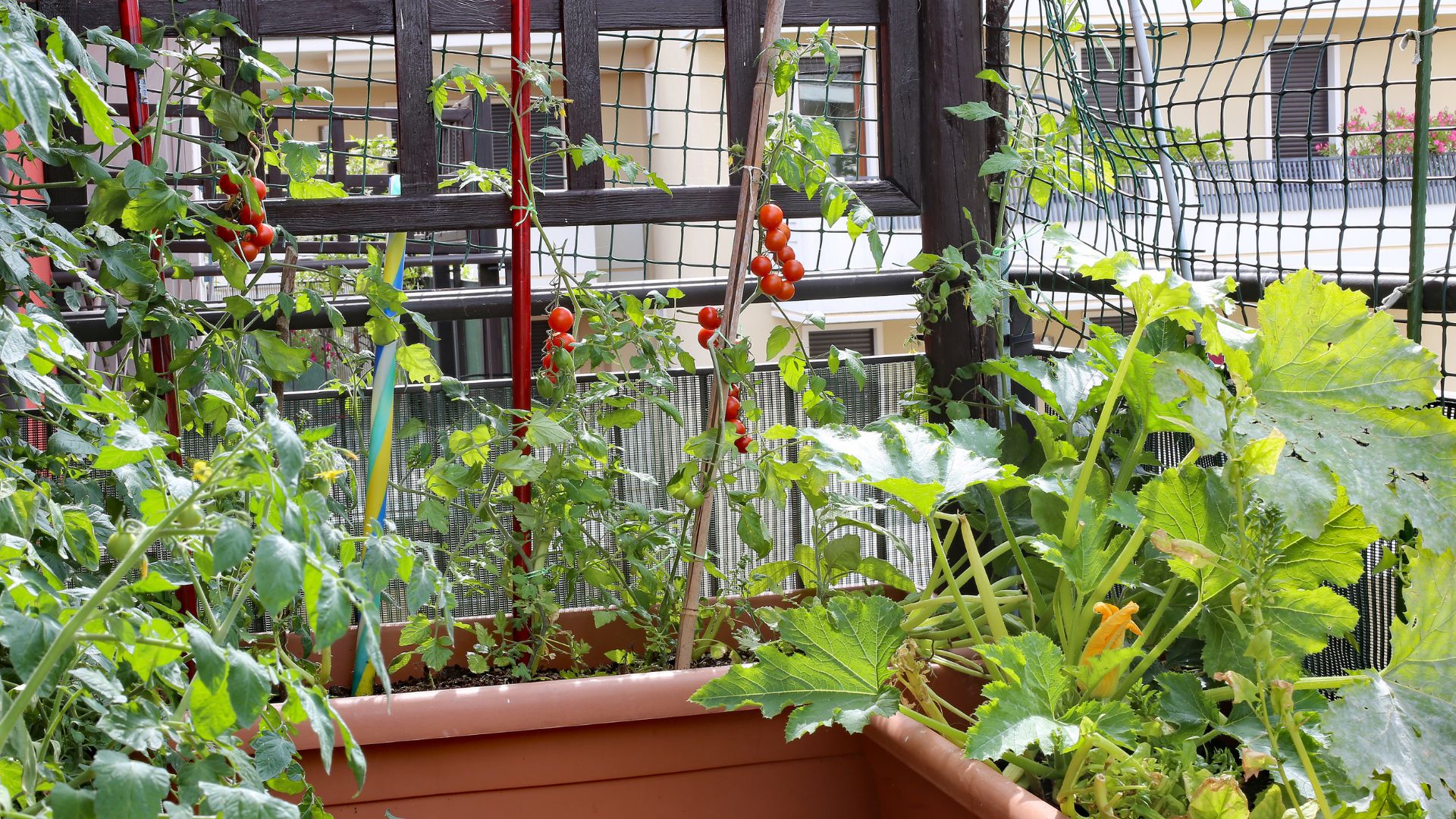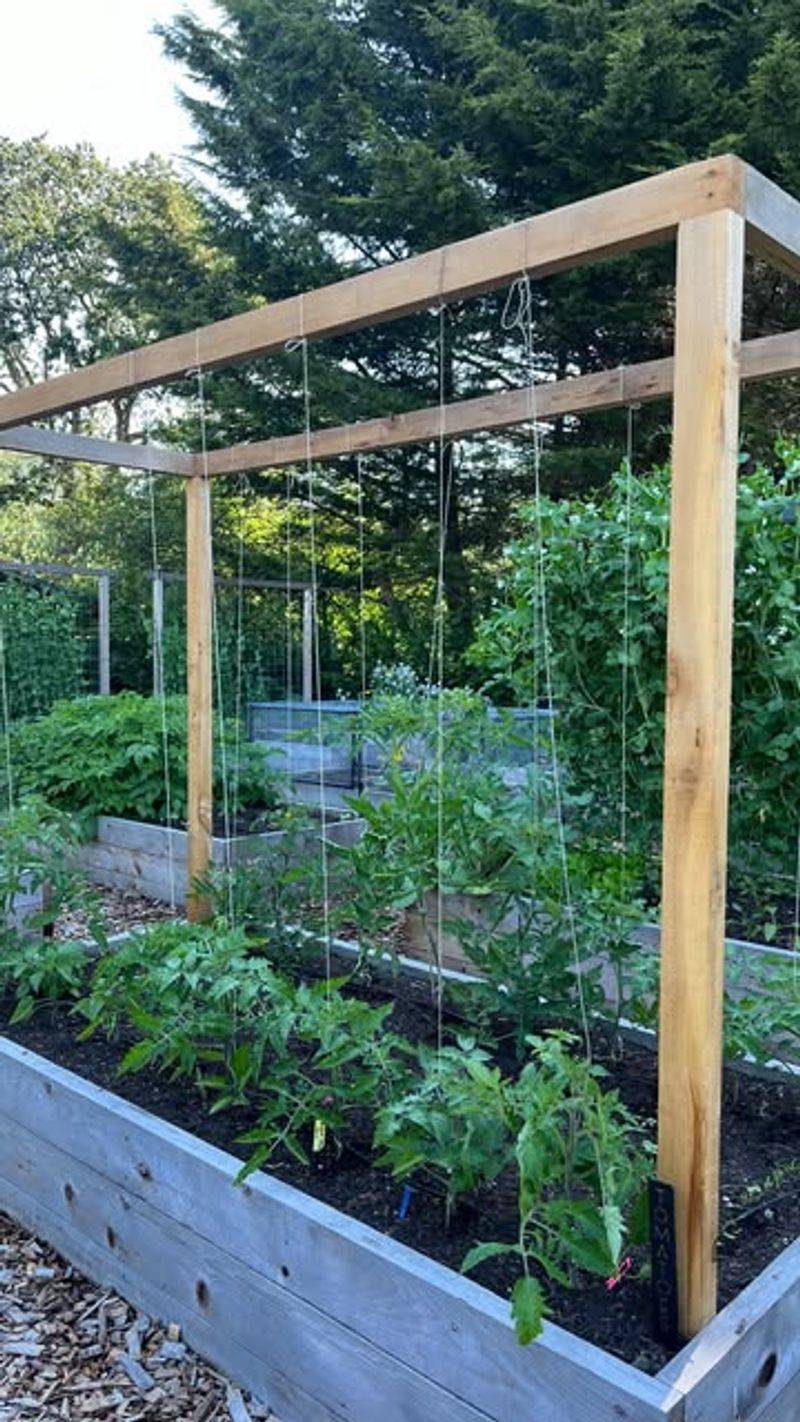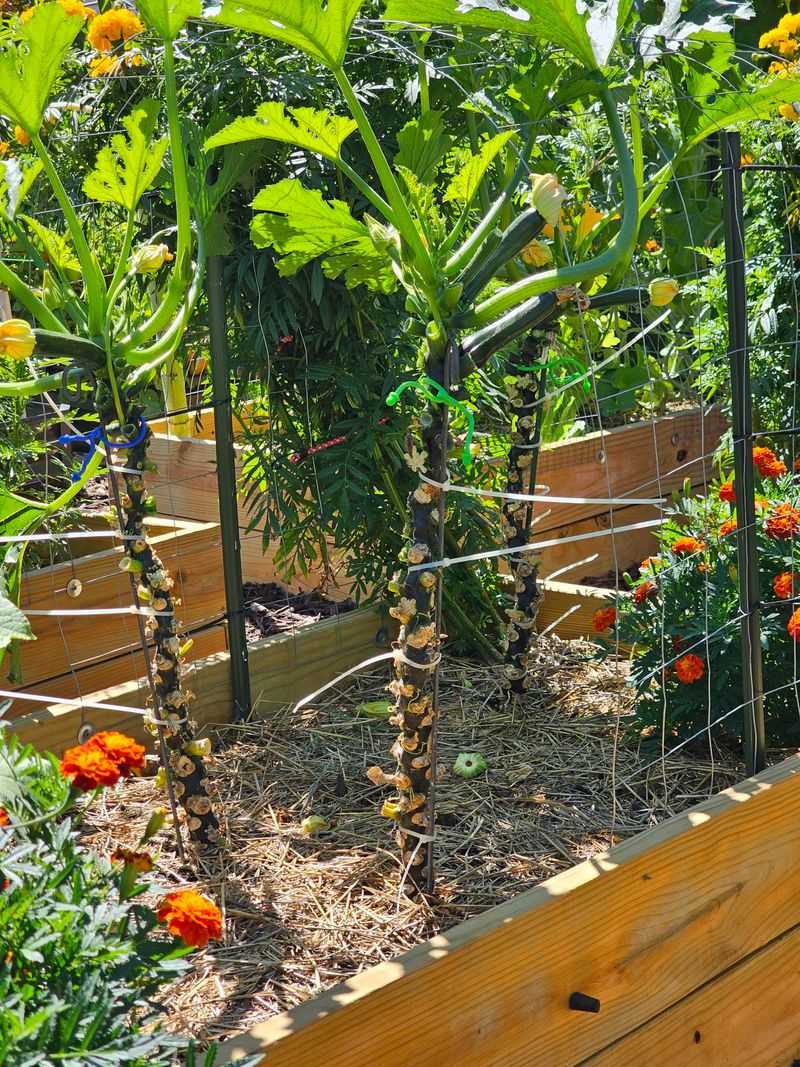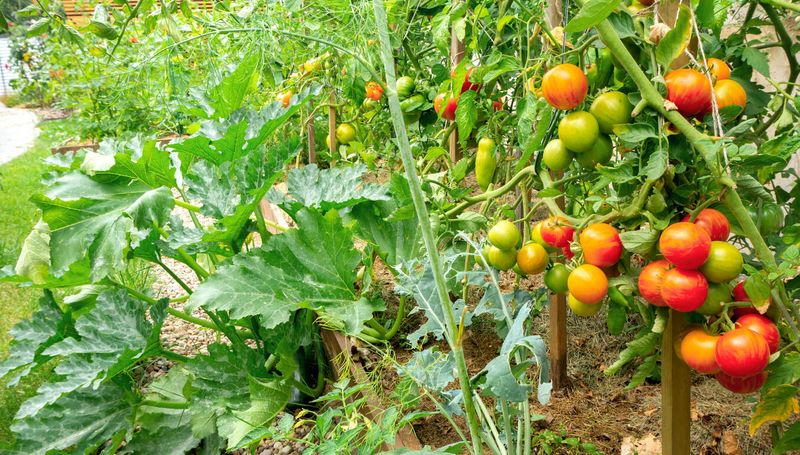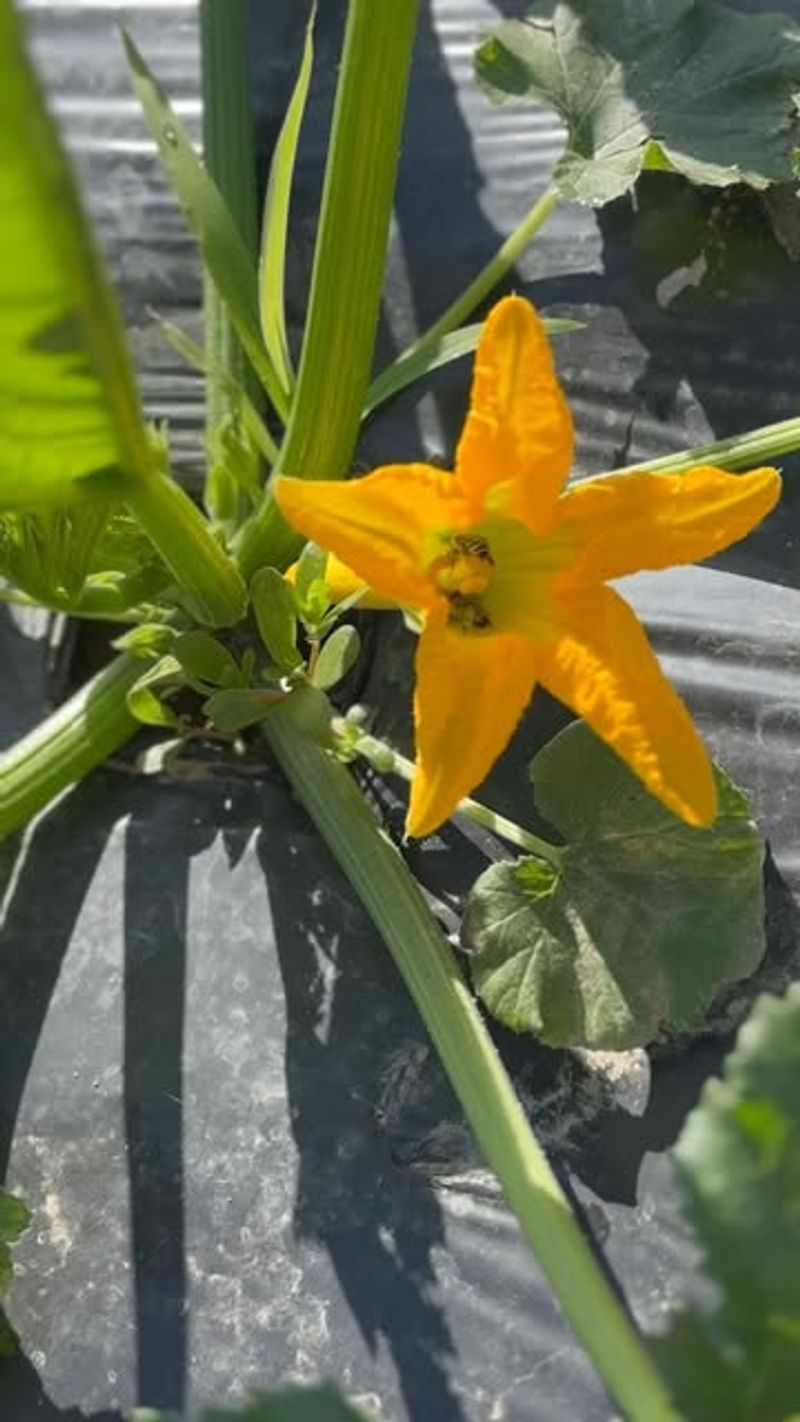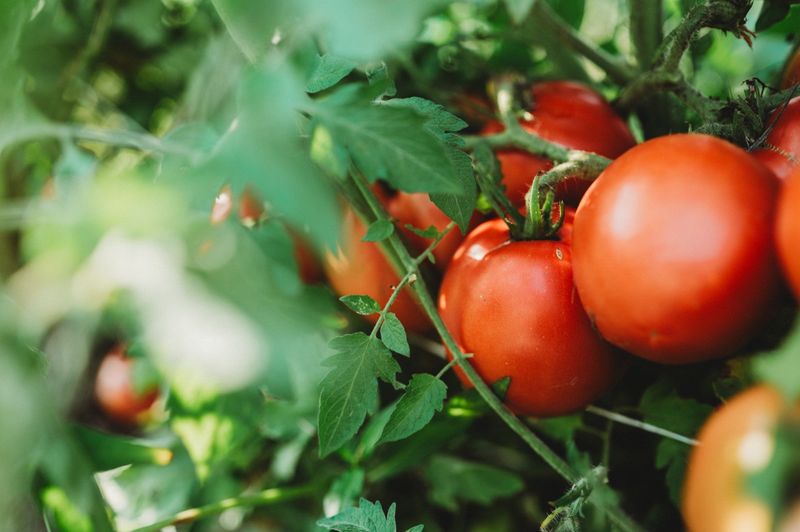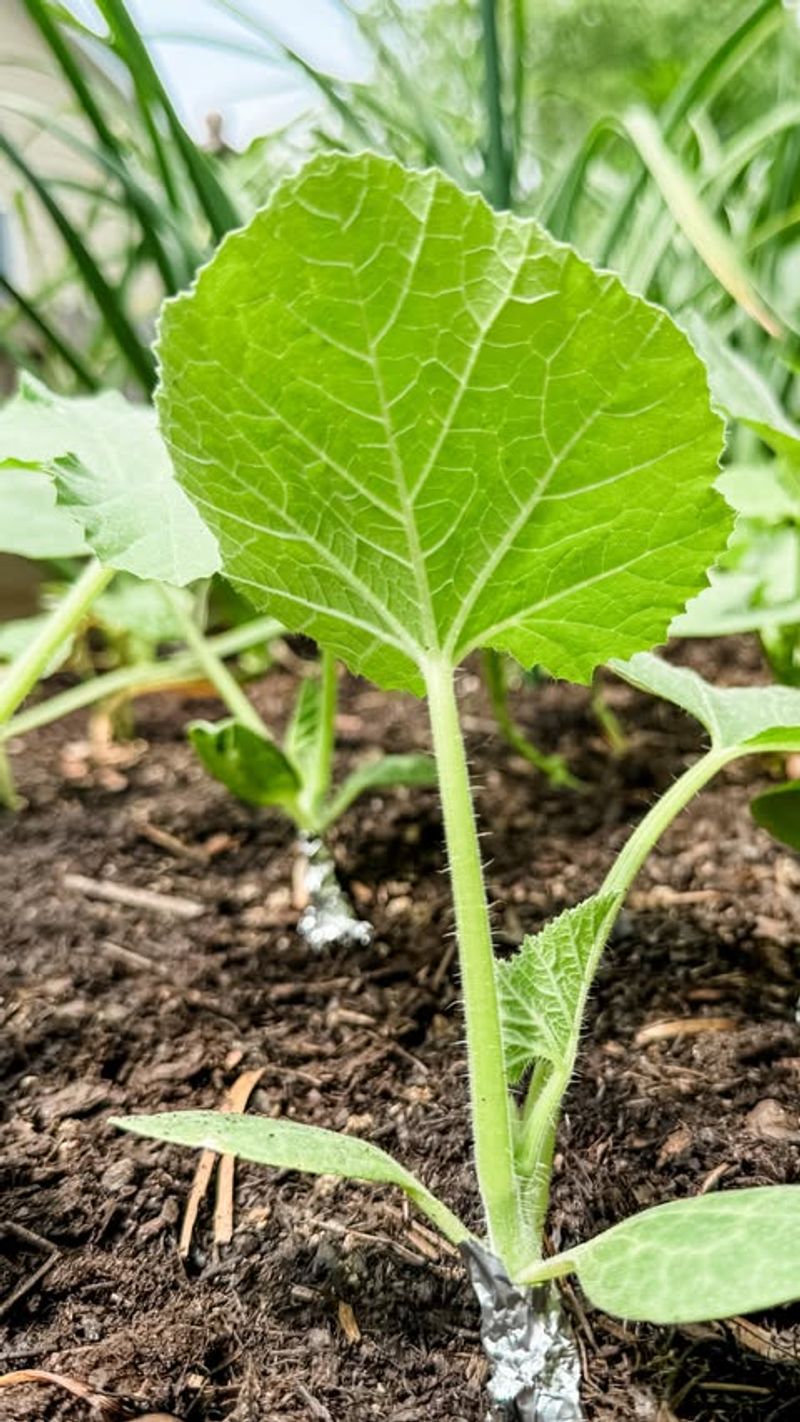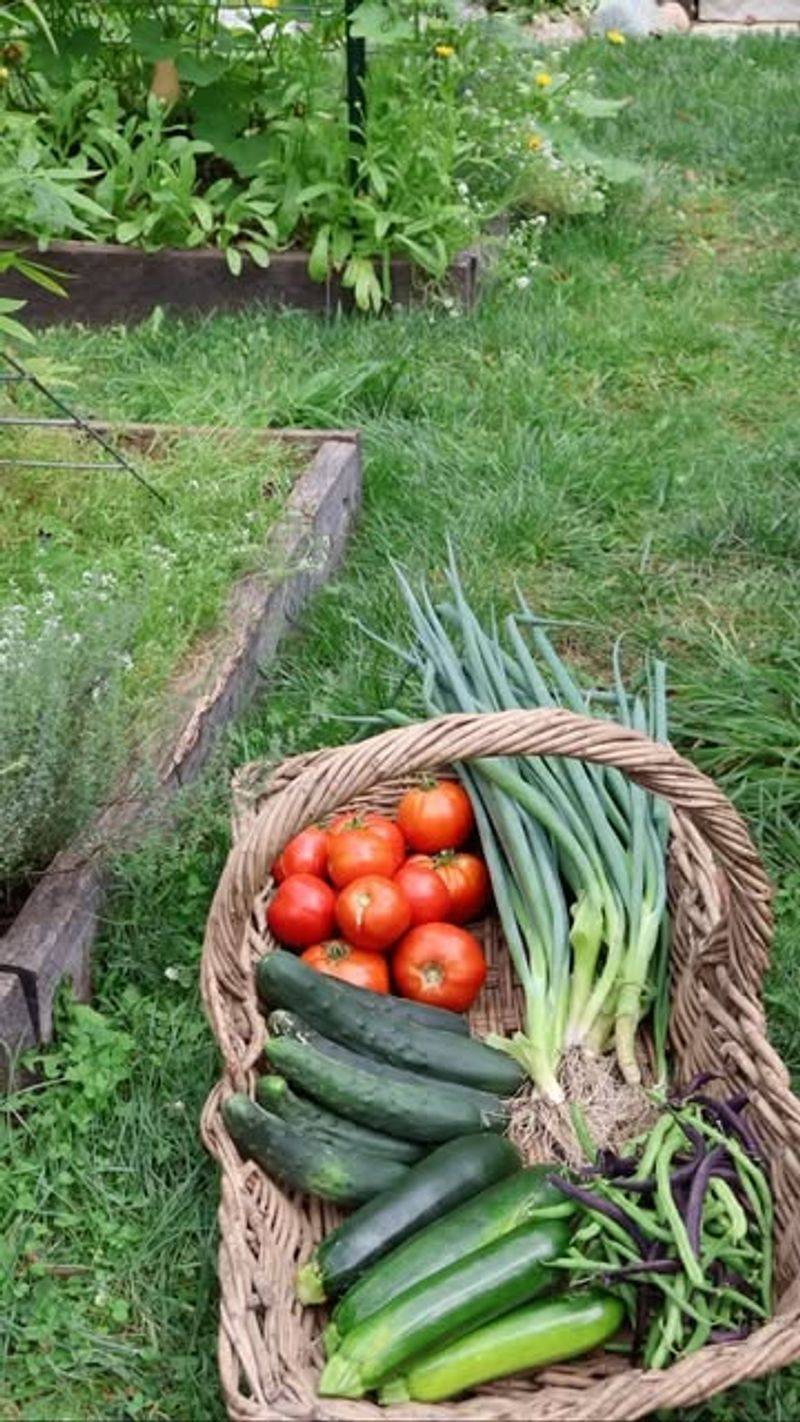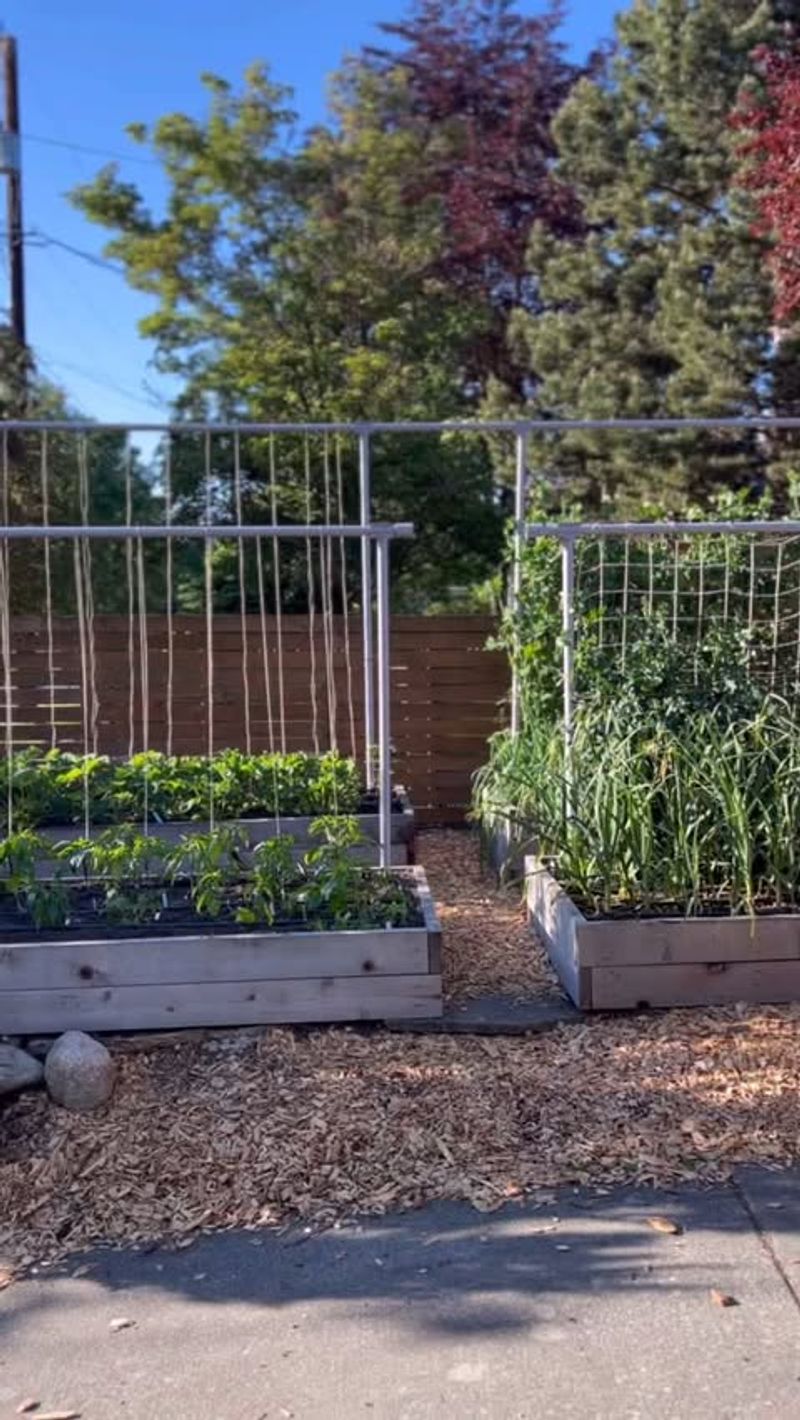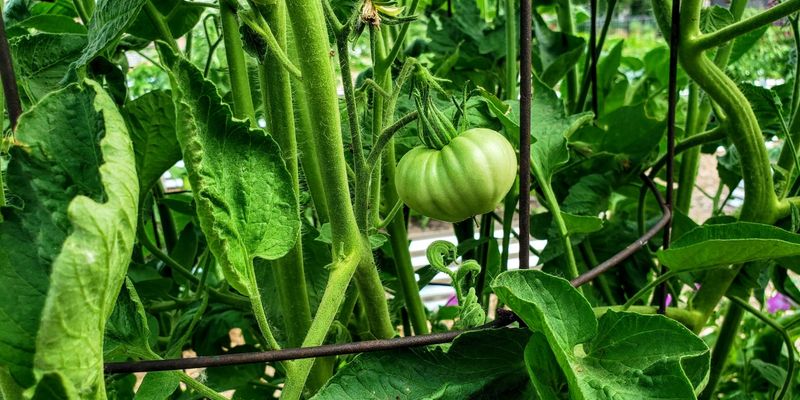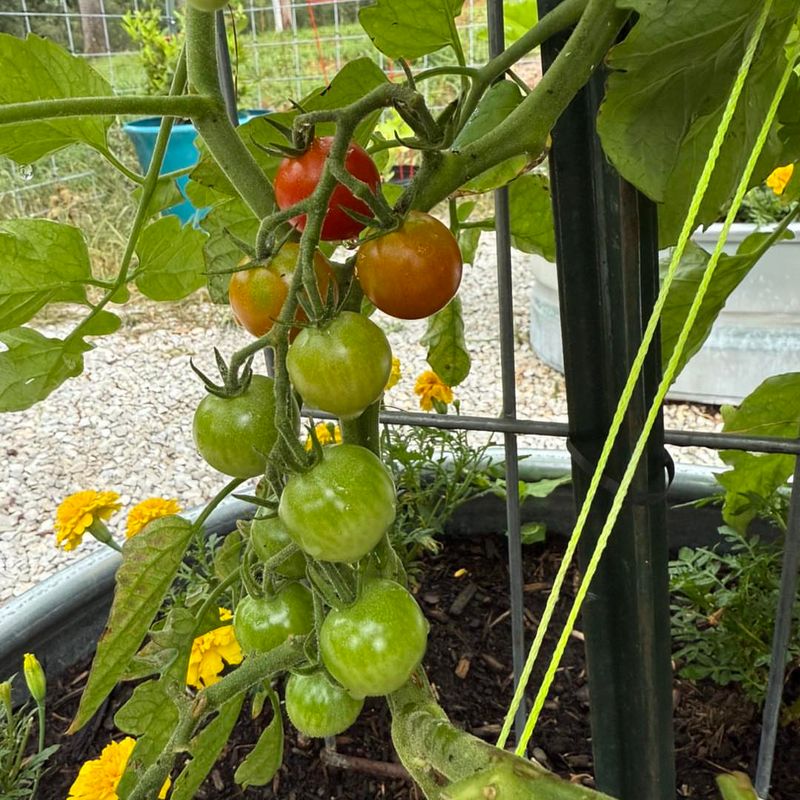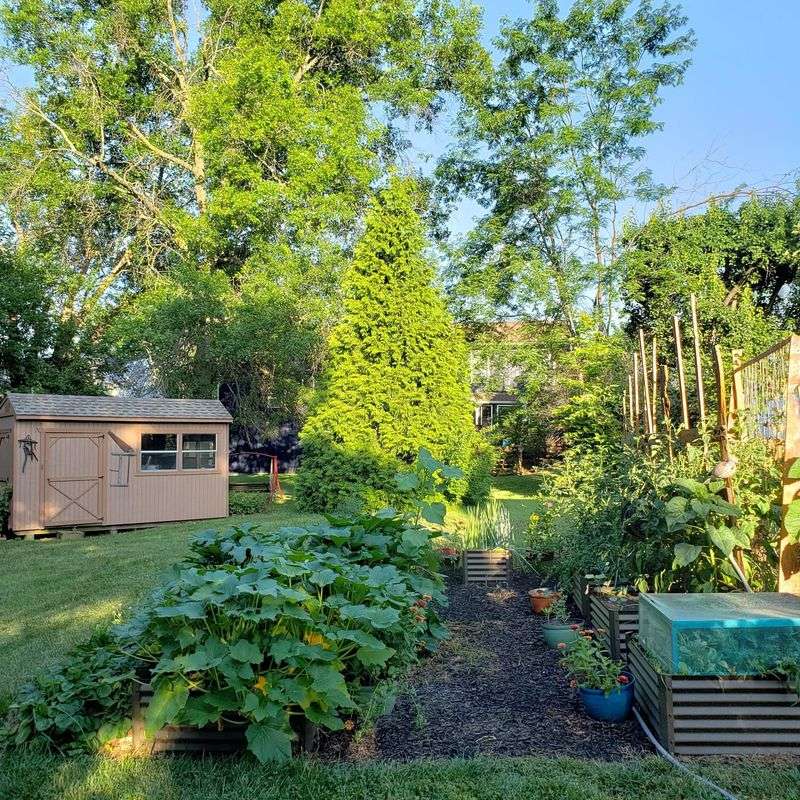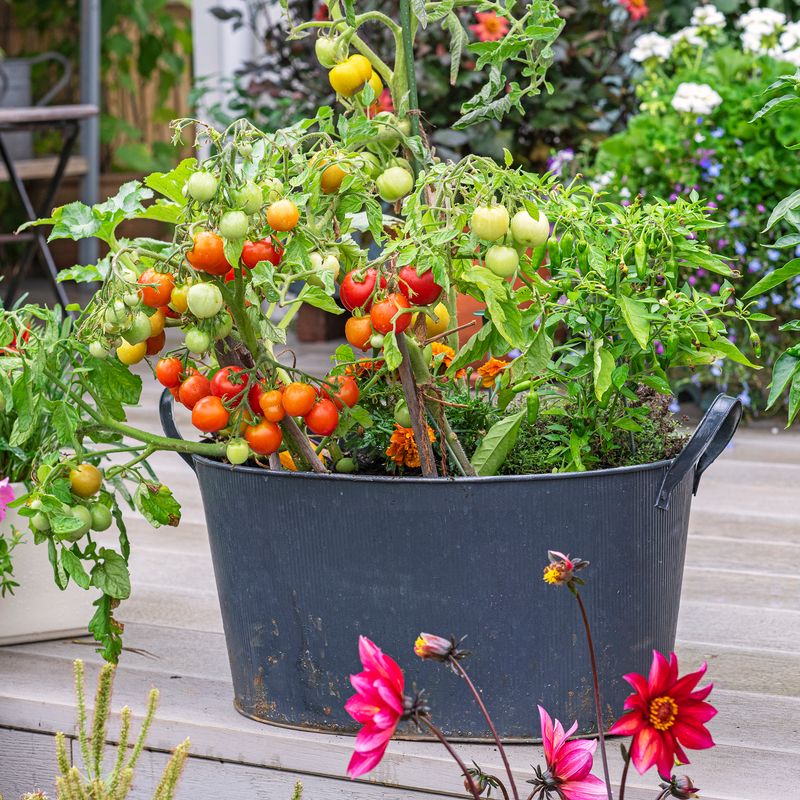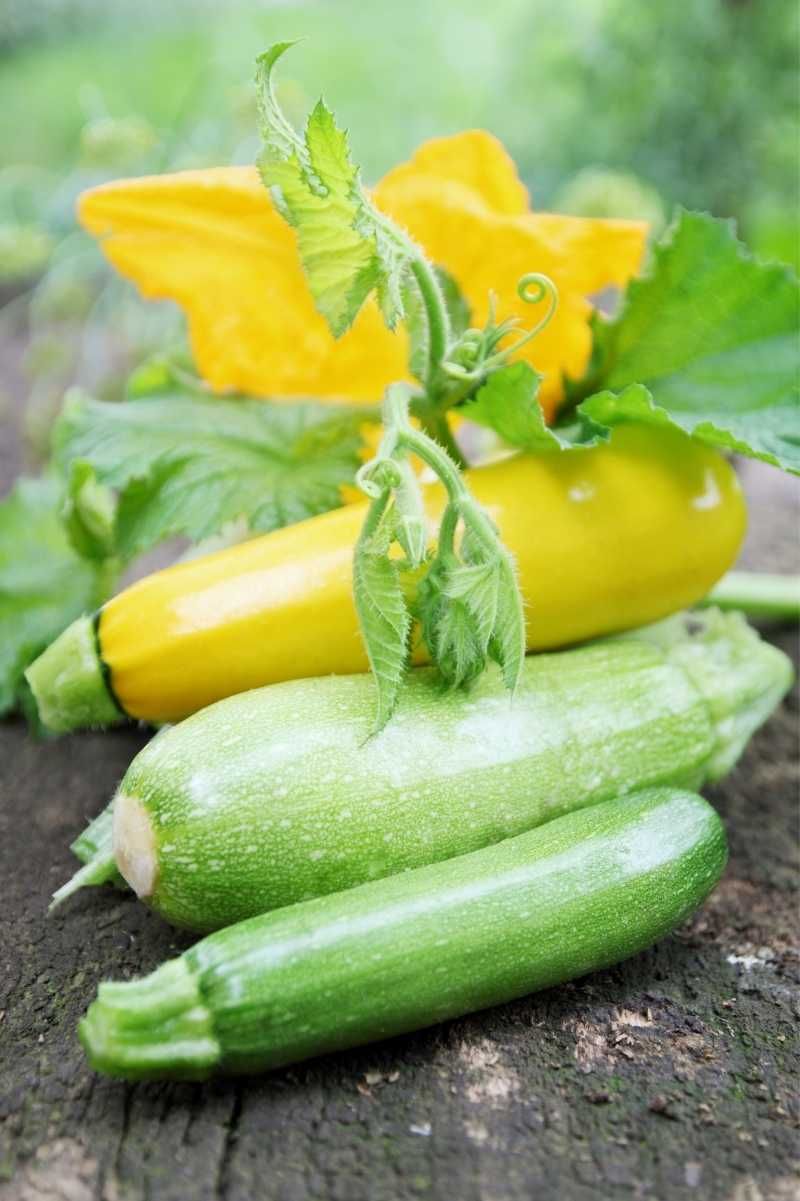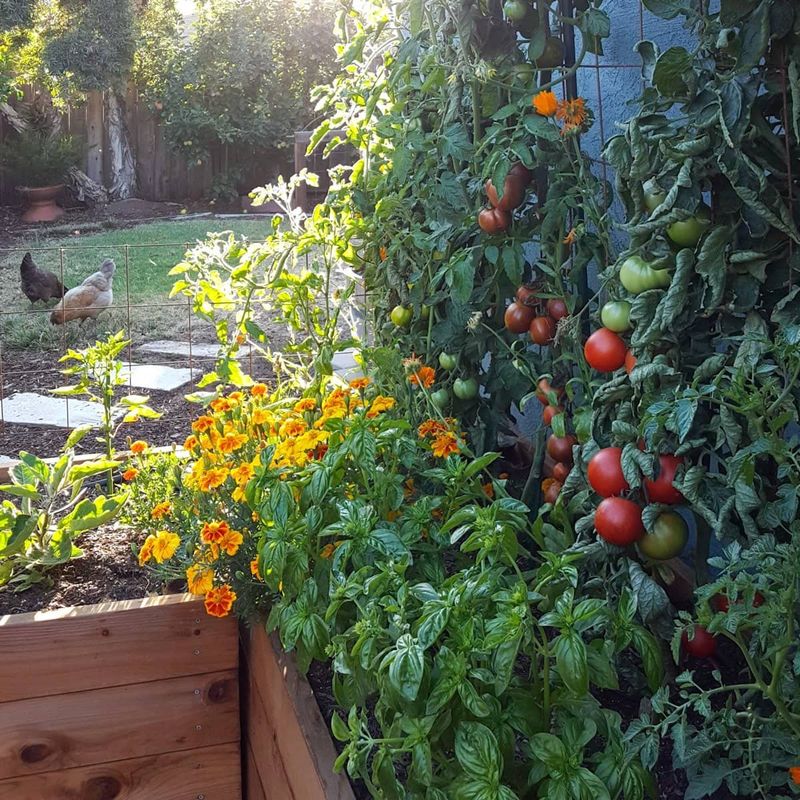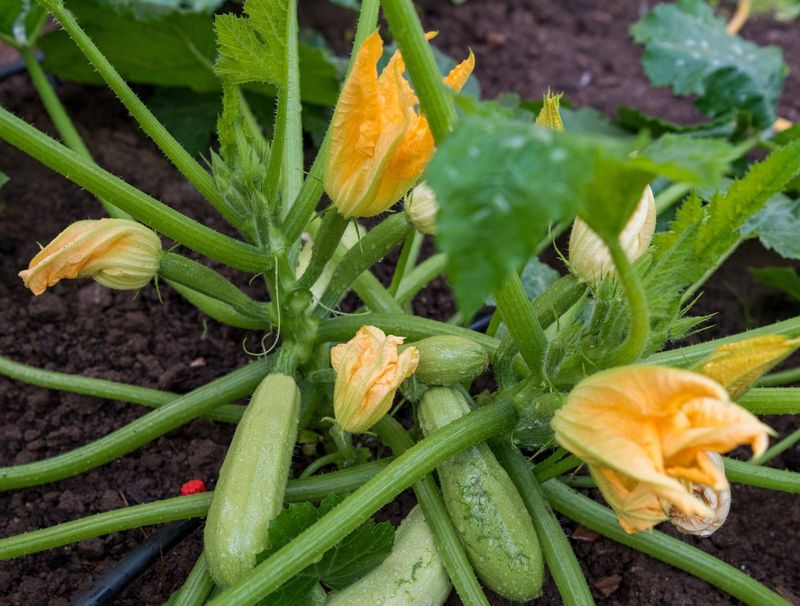Garden planning season always gets me excited—it’s like sketching out a dream that’ll grow all summer long. If you’re like me and want to make the most of every inch, tomatoes and zucchini are a duo worth planting together.
They’re both hardworking veggies that play nicely in the same garden bed. I’ve grown them side by side for years, and the results are consistently rewarding. Zucchini’s big leaves help shade the soil, keeping it moist for the thirstier tomatoes, while tomatoes help by creating a bit of vertical structure.
It’s a partnership that just works. Whether you’ve got a tiny raised bed or a big backyard plot, this combo brings out the best in both plants. Plus, having them ripen around the same time makes summer harvests feel like a feast waiting to happen.
1. Similar Growing Conditions
Both plants thrive in nearly identical conditions, making care simpler for busy gardeners. They prefer full sun exposure, well-draining soil, and consistent moisture levels throughout the growing season.
When planning your garden layout, grouping plants with matching needs streamlines your maintenance routine. No more running between different garden sections with different watering cans!
My neighbor struggled for years until she reorganized her garden by plant needs rather than vegetable types. Her tomato-zucchini patch now requires just one daily check instead of multiple visits.
2. Space-Saving Benefits
Growing these vegetables together maximizes your garden real estate through complementary growth patterns. While tomatoes grow upward on stakes or cages, zucchini spreads horizontally along the ground, utilizing different spatial zones.
The vertical growth of tomatoes means sunlight still reaches the sprawling zucchini below. This natural architecture allows you to essentially stack two crops in the footprint normally required for one.
Last year, I doubled my harvest from a tiny 4×4 plot using this technique. The neighbors couldn’t believe how much food came from such a small space!
3. Natural Pest Management
Certain pests that plague one plant are often deterred by the other in this helpful partnership. The prickly stems and leaves of zucchini plants can discourage some tomato-loving insects from getting too comfortable.
Many gardeners report fewer hornworms on tomatoes when zucchini grows nearby. The bristly texture seems to create a natural barrier that some soft-bodied pests prefer to avoid.
After switching to this planting method three seasons ago, I’ve noticed significantly less pest damage without increasing my organic pest control efforts. Nature does some of the work for me!
4. Pollination Advantages
Beneficial insects flock to both plants, creating a pollination hotspot in your garden. The bright yellow zucchini flowers particularly attract bees, butterflies, and other helpful pollinators that will also visit your tomato blossoms.
More pollinators mean better fruit set for both crops. Many gardeners notice improved yields when these plants share space compared to when they’re grown separately.
A friend who’s a beekeeper pointed this out to me years ago. Sure enough, when I started planting these vegetables together, my harvests improved noticeably without any other changes to my routine.
5. Water Conservation Techniques
Grouping plants with similar water needs helps prevent both over and under-watering issues. The broad leaves of zucchini create a living mulch effect, shading the soil and reducing evaporation around both plants.
This natural ground cover helps maintain consistent soil moisture levels even during hot summer days. Less water evaporates, meaning fewer trips to refill the watering can.
During last summer’s heat wave, my tomato-zucchini bed needed watering far less frequently than other sections of my garden. The natural shade pattern seemed to keep everything happier with less effort.
6. Balanced Nutrient Uptake
Each plant draws different nutrients from the soil in varying amounts, creating a more balanced growing environment. While heavy feeders, they don’t compete directly for the exact same nutrient profile.
This complementary feeding pattern helps prevent soil depletion that can happen when too many identical plants grow in one area. The garden stays healthier with less fertilizer input.
An older gardener in my community taught me this principle years ago. His family had maintained the same garden plot for generations without the soil becoming exhausted, partly through thoughtful plant partnerships.
7. Extended Harvest Season
Clever timing of these companions can stretch your summer harvest significantly. Early-maturing zucchini varieties often start producing while tomatoes are still developing, giving you a continuous vegetable supply.
By the time zucchini production begins to slow down in late summer, many tomato varieties hit their peak production phase. This natural relay creates weeks of additional harvest time.
The rhythm of harvesting changed completely in my garden after implementing this strategy. Instead of feast-or-famine cycles, we enjoy a steady stream of fresh vegetables from the same garden section all season long.
8. Natural Trellising Opportunities
With a bit of creativity, sturdy tomato cages can provide support for both plants. The vertical structure primarily supports tomatoes, but can also guide a zucchini vine or two in smaller gardens.
This shared infrastructure reduces the materials needed and creates an efficient growing system. Fewer garden supplies means more money saved for other projects.
A gardening friend showed me how to train a compact zucchini variety to climb alongside determinate tomatoes. The resulting plant sculpture not only saved space but became the most photographed feature in my summer garden!
9. Complementary Root Systems
Underground, these plants develop different root structures that access soil resources without excessive competition. Tomatoes send down deeper roots, while zucchini tends to spread more horizontally in the top layers of soil.
This natural separation helps both plants access water and nutrients from different soil zones. The garden essentially becomes three-dimensional, utilizing resources above and below ground efficiently.
Seeing this in action requires pulling plants at season’s end, but it’s fascinating to observe how they’ve shared the soil without fighting for the same resources. Nature has elegant solutions to crowding problems!
10. Disease Resistance Improvements
Diversity in the garden naturally improves overall plant health and resilience. Planting different families together can interrupt the spread of diseases that might otherwise move quickly through a monoculture of identical plants.
Many fungal issues that affect one plant won’t transfer to the other, creating natural firebreaks in your garden. This simple strategy reduces the need for chemical interventions.
The year I switched from rows of single crops to mixed plantings, I noticed fewer disease problems overall. What might have wiped out an entire tomato patch in previous years now seemed contained to just a plant or two.
11. Culinary Convenience Factor
Having these kitchen companions growing side by side makes meal planning easier throughout summer. Many classic recipes call for both vegetables, so harvesting from the same garden section streamlines cooking preparation.
From ratatouille to grilled vegetable platters, these summer staples frequently appear together on the plate. Their garden proximity reflects their natural pairing in countless Mediterranean and summer dishes.
During busy weeknights, I’ve found myself appreciating this simple convenience more than expected. One quick garden trip yields the foundation for dozens of quick, healthy meals without extra planning.
12. Mutual Shade Benefits
During intense summer heat, these plants can protect each other from stress. Tomato plants provide dappled afternoon shade to zucchini leaves, preventing scorching during the hottest part of the day in many climates.
Meanwhile, the broad zucchini foliage helps keep tomato roots cool and reduces water evaporation from the soil surface. This mutual protection helps both plants thrive during challenging weather.
The summer we hit 105°F for a week straight, gardens throughout the neighborhood struggled. My tomato-zucchini patch suffered less damage than most, convincing several neighbors to try the combination themselves.
13. Simplified Feeding Schedule
Fertilizing becomes more straightforward when growing plants with similar nutritional needs. Both vegetables benefit from similar feeding schedules and fertilizer types, allowing for simplified garden maintenance.
A balanced organic fertilizer applied at the same intervals works well for this pairing. No more keeping track of different feeding schedules for different garden sections!
Before adopting this approach, my garden notebook was filled with complicated feeding charts. Now, a single reminder on the calendar keeps both crops happy and productive without the mental overhead.
14. Microclimate Creation
Together, these plants create a beneficial microclimate that moderates temperature extremes. The combined leaf canopy generates slightly higher humidity and more stable temperatures than either plant alone or bare soil.
Many vegetables thrive in this modified environment, which more closely resembles natural ecosystems than traditional row planting. The plants essentially help each other create ideal growing conditions.
Using a garden thermometer, I’ve measured temperature differences of up to 10 degrees between my tomato-zucchini patches and more exposed garden areas during summer afternoons. The plants were essentially cooling themselves!
15. Soil Health Enhancement
Different plant types contribute varied organic matter to the soil as they grow and shed leaves. This diversity feeds soil microorganisms more effectively than single-crop plantings, improving overall soil health.
Healthy soil means healthier plants with better natural resistance to pests and diseases. The ecosystem below ground becomes as diverse as the one above.
After several seasons of growing these companions together, I’ve noticed my soil becoming darker and more crumbly without additional amendments. The garden seems to be building its own fertility through this simple partnership.
16. Season-Long Visual Appeal
Beyond practical benefits, this pairing creates an aesthetically pleasing garden display throughout the growing season. The architectural contrast between upright tomatoes and spreading zucchini creates visual interest from planting time to frost.
Yellow zucchini blossoms complement the red fruit of ripening tomatoes, creating a naturally beautiful color palette. Even utilitarian vegetable gardens can become eye-catching landscape features.
Unexpected garden beauty was an unplanned bonus when I first tried this combination. Now I deliberately position my tomato-zucchini beds where visitors can enjoy them, proving productive gardens can be showstoppers too!

